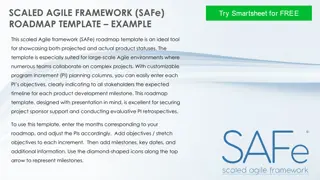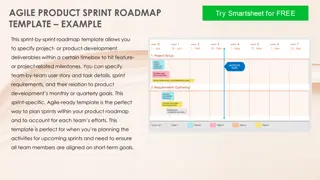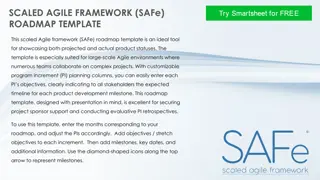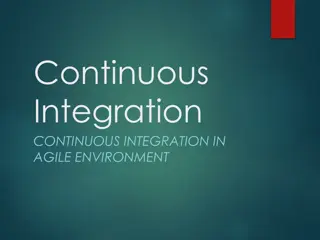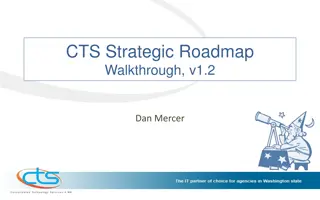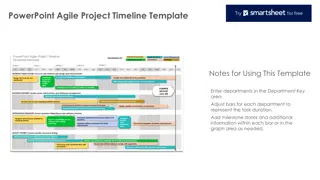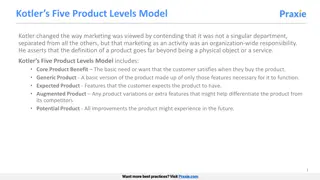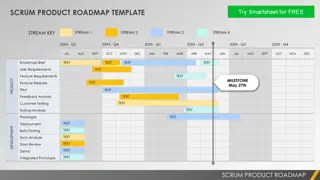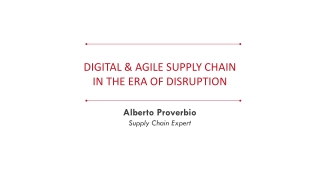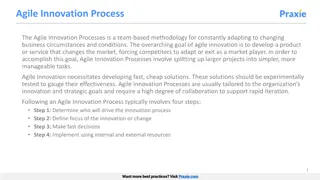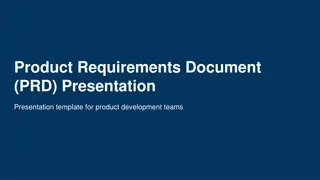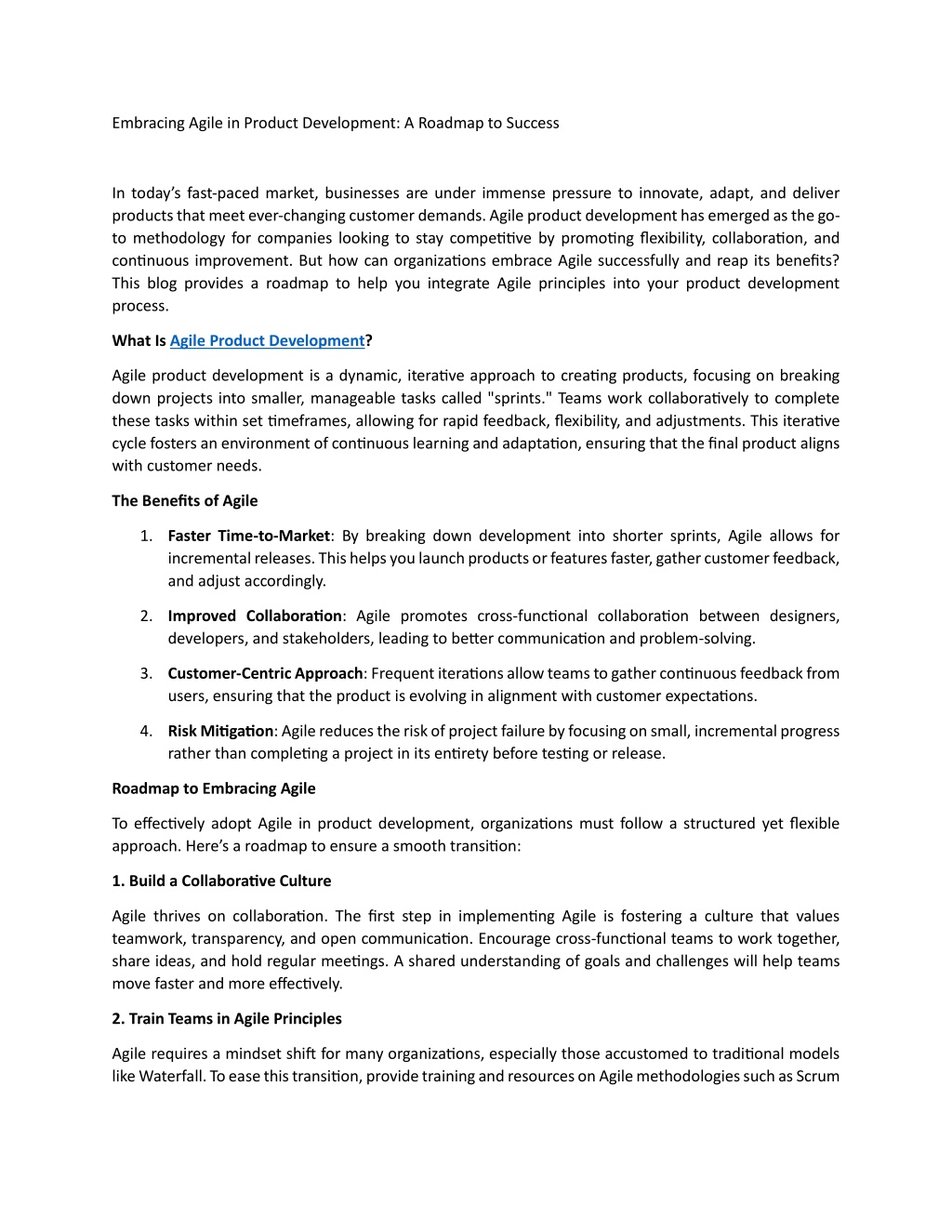
Embracing Agile in Product Development A Roadmap to Success
Agile product development is a dynamic, iterative approach to creating products, focusing on breaking down projects into smaller, manageable tasks called "sprints."
Download Presentation

Please find below an Image/Link to download the presentation.
The content on the website is provided AS IS for your information and personal use only. It may not be sold, licensed, or shared on other websites without obtaining consent from the author. Download presentation by click this link. If you encounter any issues during the download, it is possible that the publisher has removed the file from their server.
E N D
Presentation Transcript
Embracing Agile in Product Development: A Roadmap to Success In today s fast-paced market, businesses are under immense pressure to innovate, adapt, and deliver products that meet ever-changing customer demands. Agile product development has emerged as the go- to methodology for companies looking to stay competitive by promoting flexibility, collaboration, and continuous improvement. But how can organizations embrace Agile successfully and reap its benefits? This blog provides a roadmap to help you integrate Agile principles into your product development process. What Is Agile Product Development? Agile product development is a dynamic, iterative approach to creating products, focusing on breaking down projects into smaller, manageable tasks called "sprints." Teams work collaboratively to complete these tasks within set timeframes, allowing for rapid feedback, flexibility, and adjustments. This iterative cycle fosters an environment of continuous learning and adaptation, ensuring that the final product aligns with customer needs. The Benefits of Agile 1.Faster Time-to-Market: By breaking down development into shorter sprints, Agile allows for incremental releases. This helps you launch products or features faster, gather customer feedback, and adjust accordingly. 2.Improved Collaboration: Agile promotes cross-functional collaboration between designers, developers, and stakeholders, leading to better communication and problem-solving. 3.Customer-Centric Approach: Frequent iterations allow teams to gather continuous feedback from users, ensuring that the product is evolving in alignment with customer expectations. 4.Risk Mitigation: Agile reduces the risk of project failure by focusing on small, incremental progress rather than completing a project in its entirety before testing or release. Roadmap to Embracing Agile To effectively adopt Agile in product development, organizations must follow a structured yet flexible approach. Here s a roadmap to ensure a smooth transition: 1. Build a Collaborative Culture Agile thrives on collaboration. The first step in implementing Agile is fostering a culture that values teamwork, transparency, and open communication. Encourage cross-functional teams to work together, share ideas, and hold regular meetings. A shared understanding of goals and challenges will help teams move faster and more effectively. 2. Train Teams in Agile Principles Agile requires a mindset shift for many organizations, especially those accustomed to traditional models like Waterfall. To ease this transition, provide training and resources on Agile methodologies such as Scrum
and Kanban. This ensures that every team member understands their role and the core principles driving Agile. 3. Start Small with Pilot Projects It s best to test Agile with smaller, less complex projects before rolling it out company-wide. Starting small helps teams become comfortable with the Agile process, identify bottlenecks, and fine-tune the approach without the high stakes of a large-scale initiative. 4. Adopt Agile Tools Agile requires effective project management tools to help track progress, manage tasks, and foster communication. Tools like Jira, Trello, or Asana are excellent for keeping sprints organized and allowing teams to monitor their progress in real-time. These tools also make it easy to assign responsibilities, set deadlines, and ensure transparency. 5. Focus on Continuous Feedback One of Agile s core principles is continuous feedback from stakeholders and users. Frequent releases or iterations allow teams to collect valuable input, enabling them to adapt and improve the product. After each sprint, hold retrospectives to assess what went well and what could be improved, ensuring that every cycle is more efficient than the last. 6. Promote Flexibility and Adaptability Agile is all about being flexible. Encourage teams to be open to change and ready to pivot when necessary. This adaptability is critical, especially in dynamic industries where customer needs and market conditions evolve rapidly. Agile doesn t mean sticking rigidly to a plan, but rather responding efficiently to feedback and data. Conclusion Embracing Agile in product development can drive innovation, accelerate time-to-market, and increase customer satisfaction. By fostering collaboration, adopting Agile tools, and promoting continuous feedback, organizations can create an environment where Agile thrives. Remember, the key to success with Agile is flexibility, open communication, and a willingness to learn and adapt. Following this roadmap, your teams will be well on their way to Agile success. Read development.html More: https://techhorizonsolutions.blogspot.com/2024/09/embracing-agile-in-product-


